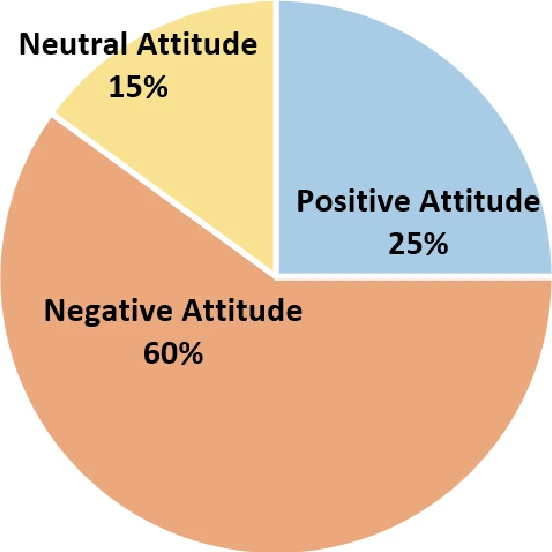Introduction:
In recent years, with the rapid progress of science and technology, the rapid development of the network, the application of social media has been deeply involved in human daily life. As a result, all major social media are trying to retain and attract more users as much as possible, thus creating an information cocoon. Information cocoon through a specific algorithm, automatically identify each person’s preferences, and then push the corresponding article or video to them, so that they can only choose to watch the content of their interest in social media.

For social media platform:
The benefits of the emergence of information cocoons for the media are indisputable. Information cocoon helps users personalize their accounts, filter out a lot of content that they are not interested in, improve the efficiency of users browsing social platforms, and help users find more new ideas and new perspectives in their favorite fields. And quickly discover the latest news in their field of interest. These features all improve the user’s sense of use of the platform and enhance the user’s dependence on the social media platform. All of these benefits will boost the reputation of the social media platform, and more and more users will join in. According to data from the State Library of NSW digital archive, the volume of information Cocoon results peaked in 2018, and this heat has continued into 2021, while tiktok reported 55 million monthly active users worldwide in January 2018. That’s an increase of 1,818% in 3.9 years between 2018 and 2021, and a 428.3% increase in time spent per user per month over those three years. The social media platform’s revenue is directly proportional to the number of users and usage, TikTok users spend about $500 million per quarter through 2021, TikTok’s parent company ByteDance is estimated to be worth at least $180 billion, and in some cases, its value will rise.

The second benefit that information cocoons bring to social media platforms is the revenue that social media platforms generate in terms of advertising. Social media provides a good marketing channel for advertisers, who can find online celebrities related to their own products to promote and sell, such as cosmetics, beauty bloggers to promote. At the same time, social media platforms provide advertisers with a wealth of information about user behavior and preferences. This data can be used for market research and decision-making to help merchants find the most suitable online celebrities and advertising targets. The role of the platform is as an intermediary, it recombines the content posted by users with the advertising content, and the merchants will pay the platform for this, and the platform obtains two markets from it, one is the publication provided to the users, and the other is the publication provided to the advertisers. It uses multilateral economics to ensure the maximization of its revenue. Taking Tiktok as an example, Tiktok’s annual revenue in 2020 is about $1.9 billion, of which $1.3 billion comes from advertising
For users:
The information cocoon is not all good for the user as it is for the platform. Start with the good ones, many people use social media to kill time, to be happy and to find a sense of identity. Information cocoon can well meet these needs of users, and wrap them in a world full of their favorite content and information. Users’ sensory experience will indeed be greatly improved, and information cocoon will help users match with like-minded people. Users can connect with them and get a sense of identity from them.
The bad effects of the information cocoon on the user are no less than the good effects.As mentioned above, information cocoons envelops users in a world full of content that they like and are interested in. In such a world, users are prone to visual barriers, that is, homogenization of information, information cocoons reinforce the views they previously had, and continue to wrap them in it, making it difficult for users to see or think of other perspectives. In addition, information cocoons are very good at creating groups on social media platforms, where people have similar ideas. The effect of information cocoons makes them discuss together and browse similar content every day, which will aggravate the phenomenon of polarization. At the same time, the huge economy brought by the information cocoon to the platform, and the income from fame will sometimes become a sharp knife to the users. The benefits of the platform are directly proportional to the user experience, which will result in many social media platforms constantly recommending content to users to attract them, and effective attention will be wasted unconsciously. Users are addicted to the platform and constantly consume the information cocoon built by themselves to improve the frequency and participation of users.
Here’s a video detailing the downside of the information cocoon
According to the National Library of New South Wales archives at the peak of the information cocoon data (18 March 2018), the media section had a total of 1242 results about the information cocoon, of which 284 were about positive emotions (joy, love, surprise) and negative emotions (sad). dear, anger has only 109, less than half of the positive emotions, and at this time, the relevant words are remain, dear, acknowledge and so on. Compared with the peak period of this year (July 12), there were only 447 results related to the information cocoon in the media section, and only 84 positive emotions were joy, while there were no other positive emotions. However, sad, dear and anger still appeared in the negative emotions, with a total of 36. And there’s cognitive dissonance in hushtag
Users‘ attitude towards it:
Although the data in the peak period of these two years are more positive emotions, it can be seen from hushtag, keywords and sentiment entries that there are more negative emotions for information cocoon this year than in 2018. In this year, there is only one word related to positive emotions, joy, and the keywords related to joy are luck and investment. It does not rule out that some of it is the platform or the attitude of the business, not all of it is the user. At the same time, from the hushtag of “cognitive bias”, it can be seen that users are aware of the disadvantages of information cocoon, which traps users in the “safe zone”, makes users unable to see things they do not want to see or are not interested in, and also makes users’ perspective narrow, resulting in information bias. If the situation is too bad, it may even lead to the division of the entire society. This is also why people’s attitude towards the information cocoon is more and more negative one factor, another factor is the homogeneity of information, research shows that in a long time, a large number of homogenized information will make users bear too much burden, it is easy to make users have fatigue, boredom and other negative feelings, and then want to get out of the original information cocoon. In a survey on Tiktok released in July 2023, 60% of Tiktok users hold a negative view of the information cocoon, and are more willing to switch to other sites or use short video software to break out of the limitations, only 25% of people hold a positive attitude toward the information cocoon, indicating that they are willing to stay stuck in the information cocoon, and 15% of users maintain a neutral attitude

Conclusion:
In summary, information cocoon is a double-edged sword, it can indeed bring considerable economic and fame benefits for the platform, and can promote economic development and Internet development in the long run. At the same time, it will also close the user’s vision and thought, users live in a world of information cocoon, resulting in a gradual decline in the user’s evaluation of it, but it is undeniable that the information cocoon technology provides users with more and more efficient way to obtain information. Information cocoon is a new technology emerging in recent years, it has not reached maturity, there is still a lot of room for development, and I think people should not only focus on the information cocoon, or should pay more attention to the role of people in it
Footnote:
John, M. (2023). TikTok Statistics. Thinkimpact. https://www.thinkimpact.com/tiktok-statistics/
Mansell, R., & Steinmueller, W. E. (2020). Economic Analysis of Platforms:Economic Analysis of Platforms(1st ed.). Edward Elgar Publishing Limited. https://ebookcentral-proquest-com.ezproxy.library.sydney.edu.au/lib/usyd/detail.action?docID=6317825
Monisight. (2023). Are we living in information cocoons societies [Video]. In YouTube.
Yuan, X,& Wang,C. (2022). Research on the formation mechanism of information cocoon and individual differences among researchers based on information ecology theory. Frontiers in Psychology, 13.
Liu, L., Yang, J., Ding, Z., Ren, S., Mi, C. (2023). A Sentiment Analysis of User Attitudes Toward Information Cocoons in Short Video Apps. In: Stephanidis, C., Antona, M., Ntoa, S., Salvendy, G. (eds) HCI International 2023 Posters. HCII 2023. Communications in Computer and Information Science, vol 1835. Springer, Cham.
Ren, S., Liu, L., Zheng, Y., Yu, L., Hu, Y., Mi, C. (2022). Antecedents and Consequences of Information Cocoon Awareness in Short-Form Video APPs: An Information Ecology Perspective. In: Meiselwitz, G., et al. HCI International 2022 – Late Breaking Papers. Interaction in New Media, Learning and Games. HCII 2022. Lecture Notes in Computer Science, vol 13517. Springer, Cham. https://doi.org/10.1007/978-3-031-22131-6_9